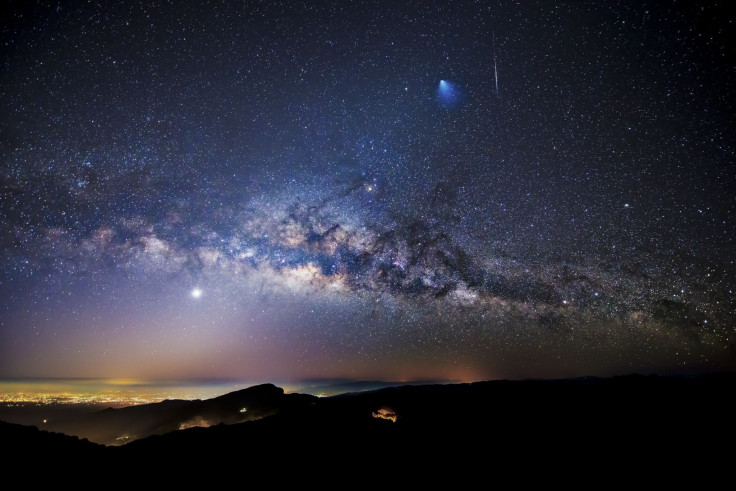When To See Quadrantids, First Meteor Shower Of 2018

The first month of 2018 is anything but dull when it comes to astronomy. January started with one supermoon and will end with a second, and in between the two, there will be a meteor shower.
The Quadrantids meteor shower will peak late Wednesday night into Thursday morning. Unlike most meteor showers, it only peaks for a few hours, according to NASA. Unfortunately, this year the shower coincides with the nearly full moon meaning there’s plenty of light pollution from the sky as well as whatever is around viewers on the ground.
The shower will be difficult to see for most, but not impossible. NASA says that those hoping to see some of the shooting stars should look up and in any direction during the peak. It’s usually best to take in as much of the sky as possible. If the moon is distracting or seems to be making the meteors difficult to see, viewers can try wearing a baseball hat sideways to block the moon’s light.
The Quadrantids shower is a bit different than other meteor showers because instead of the meteors appearing to come from a constellation, they appear to come from the location of a former constellation. The Quadrans Muralis constellation is no longer visible and is now part of the Bootes constellation instead, according to NASA.
Where the meteors appear to come from, and where they actually come from, are two different places. The Quadrantids actually originate from an asteroid that wasn’t discovered until 2003, called 2003 EH1. Researchers think that the asteroid might be part of a comet that broke off centuries ago and the meteors that burn up in Earth’s atmosphere are actually small pieces that broke off in the process. When Earth passes through the area where the debris sits those pieces end up in the atmosphere where they burn, give off light and speed across the sky. They enter the atmosphere at a speed of 90,000 miles per hour and burn up about 50 miles high above the surface of the planet, according to NASA.
When the debris is still in space it’s called a meteoroid, they’re typically only millimeters in size. Once a meteoroid enters the atmosphere and burns up in the atmosphere, then it’s a meteor. But if it makes it all the way through the atmosphere to the surface of the Earth, then it’s a meteorite.
© Copyright IBTimes 2024. All rights reserved.





















